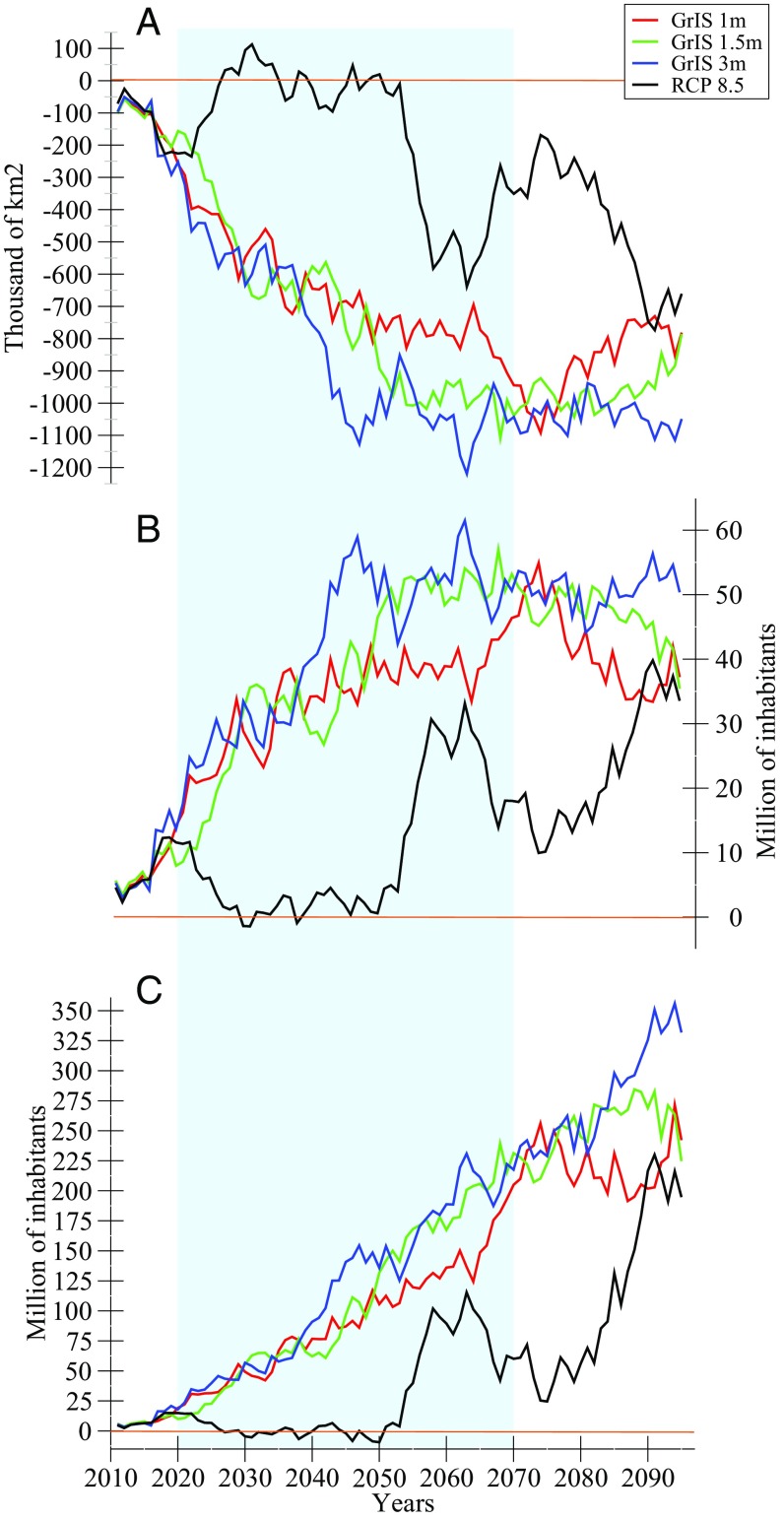Fig. 4.
Impacts of rainfall change on sorghum cultivation and on population. (A) Evolution of the surface area available for sorghum cultivation (i.e., when the average JJAS precipitation is above the sorghum water demand) for each GrIS scenario and for the baseline experiment. The evolution of the available cultivable area is given with respect to the available area averaged over the 1976–2005 reference period deduced from the historical IPSL-CM5A simulated precipitation. Negative (positive) values indicate a loss (gain) of cultivable area. (B) Evolution of the number of inhabitants living under the sorghum water demand with respect to the 1976–2005 historical reference period. This evolution is estimated with the assumption that the number of inhabitants is fixed to its 2011 level. (C) Evolution of the number of inhabitants living under the sorghum water demand with respect to the 1976–2005 historical reference period. Here, this evolution accounts for the evolution of demography provided by the SSP3 scenario. In both B and C, positive values indicate that the number of inhabitants living under the sorghum water demand increases with respect to the reference period.

